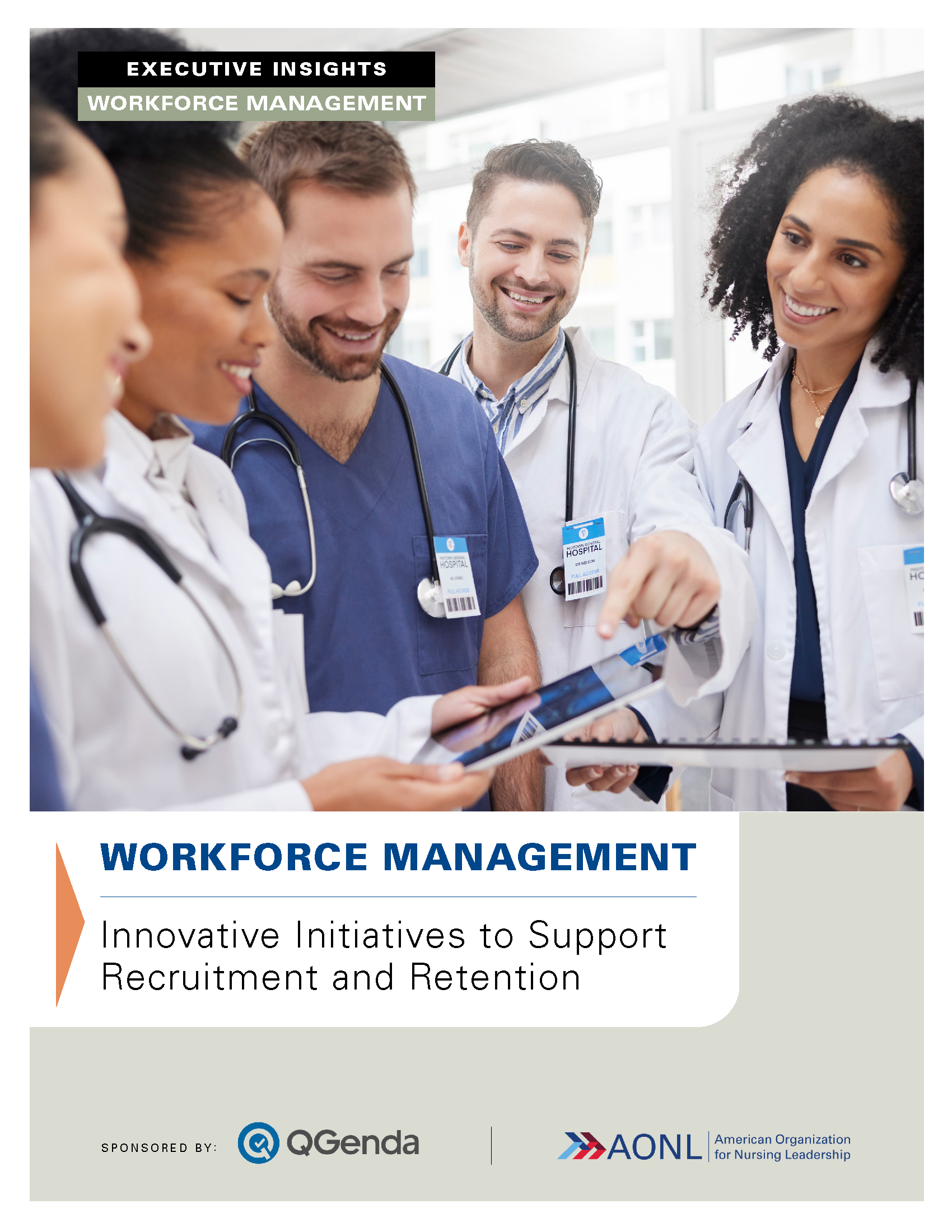
Workforce Management: Innovative Initiatives to Support Recruitment and Retention
Workface Management: Innovative Initiatives to Support
Recruitment and Retention
[Sponsored] Hospitals and health systems are grappling with complex staffing requirements, exacerbated by rising patient demands and financial constraints. As burnout, high cost labor and attrition challenge health care organizations everywhere, leaders retain nursing staff with fresh takes on training, professional development and productivity. In this executive dialogue, nurse leaders discussed health care’s most pressing workforce management issues, and the role of adaptability, equity and innovation in maintaining a thriving workforce.

This executive dialogue will highlight key findings on:
- Leadership development programs, flexible work arrangements, nurse recognition events, and a cultural focus on staff well-being can help stabilize the nursing workforce and address burnout. Similarly, virtual training and telecommuting can help accommodate nurses’ preference for flexible schedules.
- Challenges in filling specific roles, such as med/surg positions, require proactive efforts. Enhanced training, mentorship and career progression programs can help new nurses gain confidence and interest in these specialties.
- Collaboration between nursing and other units can streamline processes, encourage shared expertise, and improve communication. For example, nurses can work with IT to simplify documentation. Involving CNOs in technology decision-making can optimize resource allocation.
- Tools such as staff forecasting software and well-being scorecards can help leaders to distribute resources and schedule labor fairly. Metrics like the Productivity Index help optimize labor costs, staffing efficiency, and improve retention.
- When nurses feel heard and have a say in their work environment, they are more satisfied and likely to stay in their jobs. Supporting professional growth, honoring their preferred work styles and addressing concerns like burnout keep nurses engaged.
Sponsored by


Related Resources
Press Releases
This policy brief is the collaborative effort of nursing leaders who propose and support academic-practice partnerships between health care…
Guides and Reports
The linkage between nursing care and patient outcomes is widely accepted, yet it is often difficult to achieve an evidence-based allocation of…
Sponsored White Papers
[Sponsored] The four essential practices you need to think differently about personalizing experiences, exceeding your patients’ expectations, and…
Guides and Reports
The role of the system chief nurse executive (CNE) is a sub specialty of nursing leadership and requires its own set of competencies.
Guides and Reports
The Nursing Organizations Alliance believes that a healthy practice environment is supported by the presence of the following elements.
Sponsored White Papers
[Sponsored] Activate overwhelmed and uninvolved patients using education solutions designed to inform and connect.


